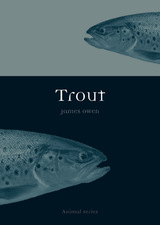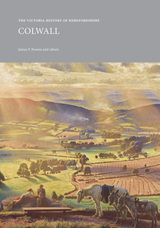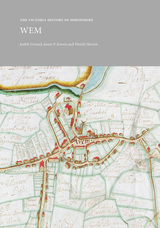3 books by Owen, James

Trout
James Owen
Reaktion Books, 2012
Leaping effortlessly from bright streams into the human imagination, the trout has an ancient fascination that can be traced back to Stone Age cave dwellers, and it thrives today in our diet, religion, folklore, history, science, literature, and, of course, fishermen’s tales.
James Owen reveals here why the trout beguiles us so. Taking myriad forms, the fish has a vitality and physical beauty that brings to mind pure waters and quiet, outdoor spaces. This biography of the trout showcases the animal as sacred fish, edible fish, farmed fish, and a fish of scientific investigation. In telling this story, Owen follows the trout around the world: starting in Europe and North America, he then follows the voyage that took the creature from England to Australia in the nineteenth century. Along the way, he presents a diverse cast of characters, from obscure British saints and fly-fishing nuns to visionary inventors, jazz singers, and counterculture novelists—all united by this magical animal.
Trout will delight and surprise anglers who have ever cast a fly and anyone who has caught a glimpse of its stunning camouflage.
[more]

The Victoria History of Herefordshire
Colwall
James Bowen
University of London Press, 2020
This book provides a detailed history of the English village of Colwall, including its geography, economy, infrastructure, industry, and population. Colwall lies on the western slopes of the Malvern Hills, near the market town of Ledbury. The large village comprises Colwall Stone, Upper Colwall, and Colwall Green.
Discussing well-known landmarks, such as the Iron Age British Camp and the nearby mineral springs, this local history provides a narrative of the village’s development through the age of the landed gentry between the fifteenth and seventeenth centuries, the agricultural era of the eighteenth century, and the development of a spa economy in the mid-nineteenth century. Industrialization changed the town, with new railway infrastructure, tunnels, and the 1892 opening of the Schweppes bottling plant at Colwall Stone. Today, Colwall’s rural location and beautiful scenery continue to attract both visitors and new residents to the town, making this text a valuable resource for tourists and locals alike.
Discussing well-known landmarks, such as the Iron Age British Camp and the nearby mineral springs, this local history provides a narrative of the village’s development through the age of the landed gentry between the fifteenth and seventeenth centuries, the agricultural era of the eighteenth century, and the development of a spa economy in the mid-nineteenth century. Industrialization changed the town, with new railway infrastructure, tunnels, and the 1892 opening of the Schweppes bottling plant at Colwall Stone. Today, Colwall’s rural location and beautiful scenery continue to attract both visitors and new residents to the town, making this text a valuable resource for tourists and locals alike.
[more]

The Victoria History of Shropshire
Wem
Judith Ann Everard and James Bowen
University of London Press, 2020
The township of Wem lies on the North Shropshire Plain, about nine miles north of Shrewsbury. The centre of a much larger medieval manor and parish, the township consists of the small medieval market town and its immediate rural hinterland. Anglo-Saxon settlements existed in the area but the town developed from a Norman foundation, with a castle, parish church, market and water mill. The urban area of the township, ‘within the bars’, was distinguished from the rural, ‘without the bars’. Burgages were laid out, with a customary borough-hold tenure, but the borough never attained corporate status. Isolated from the main regional transport routes, Wem developed as a local centre of government and trade in agricultural produce, especially cheese. It was thrust onto the national stage in 1642 when Parliamentarians defeated a Royalist attack and held the town for the duration of the Civil War. The ‘great fire’ of 1677 then destroyed most of the medieval buildings in the town centre, leading to its predominantly Georgian and Victorian appearance today. The decline in agricultural employment and the withdrawal of services and industries from small market towns like Wem in recent decades is a challenge, met by the advantage of the railway station to residents who work elsewhere but choose the town as a place to live.
[more]
READERS
Browse our collection.
PUBLISHERS
See BiblioVault's publisher services.
STUDENT SERVICES
Files for college accessibility offices.
UChicago Accessibility Resources
home | accessibility | search | about | contact us
BiblioVault ® 2001 - 2024
The University of Chicago Press









